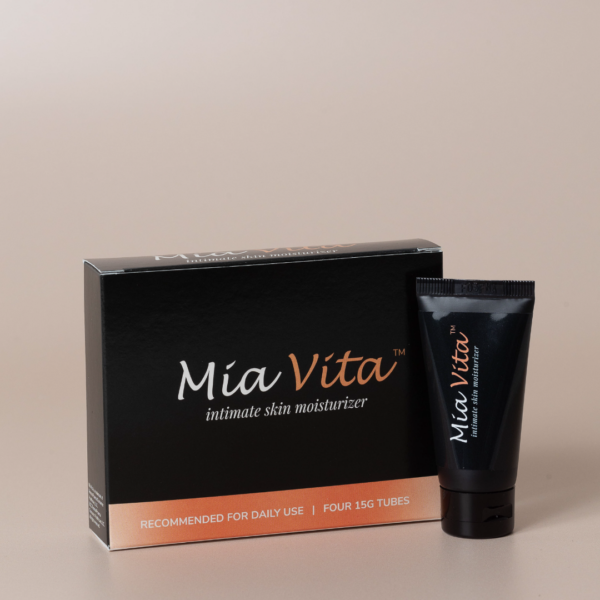
Abnormal uterine bleeding is an almost universal experience during perimenopause or within the first year after menopause and is responsible for an estimated one-third of visits to the gynecologist during this time in a woman’s life. It can lead to health complications such as anemia, fatigue, and pelvic pain, but it can also be caused by an underlying health condition requiring medical attention.
Many conditions that cause abnormal bleeding become more prevalent with age, which can make it challenging to distinguish one of these conditions from the irregular periods that typically happen during perimenopause. Following is a summary of some of the causes and symptoms of abnormal and irregular uterine bleeding.
What Is Meant by Abnormal Uterine Bleeding?
Menstrual cycles normally span from 26 to 35 days, with bleeding for 3 to 7 days and flow that is not excessively heavy, i.e., doesn’t require pad or tampon changes every hour for multiple hours at a time. Anything outside of those ranges is considered abnormal. Bleeding or spotting after sex or between periods is also abnormal. Additionally, having an underlying health condition that impairs clotting or taking certain medications can also cause abnormal bleeding during perimenopause and menopause. It’s important to mention that any bleeding after menopause is always considered abnormal.
What Are Irregular Periods and What Causes Them?
During perimenopause and menopause, the erratic fluctuations of hormones cause periods to become irregular. Perimenopause involves living with the uncertainty of never knowing when, or if, your period will start or stop. When estrogen levels are low, period cycles are shortened, arriving one after the other in rapid succession. When ovulation doesn’t occur (known as an anovulatory cycle), the cycle lengthens. But whether period cycles are shortened or lengthened, all the familiar premenstrual symptoms of bloating, mood swings, and breast tenderness can be present… and seemingly constant.
Period flow can also be lighter than normal—more like heavy spotting than an actual period—or can be extra heavy, such as after an anovulatory cycle. When this happens, the unshed endometrial lining combines with the current cycle, resulting in an unusually heavy flow. Or continuous bleeding and/or spotting can go on for weeks at a time (the proverbial “never-ending period” of perimenopause). Additionally, it’s not uncommon to have spotting or bleeding in between periods. Though normal for this phase of life, these symptoms of perimenopause can be stressful and disruptive.
What Are Some Other Causes of Abnormal Bleeding During Peri-menopause?
In addition to fluctuating hormones leading to irregular periods, the American College of Obstetricians and Gynecologists lists four of the most common conditions that cause abnormal uterine bleeding, including:
- Endometrial Atrophy: a thinning of the uterine lining due to lack of estrogen and progesterone. When the endometrium atrophies, friction can cause erosions along the endometrial surface. This can trigger inflammation, which can lead to bleeding. An estimated 25–48% of menopausal women experience abnormal uterine bleeding due to endometrial atrophy.
- Uterine Polyps (also known as endometrial polyps): small finger-like growths of endometrial tissue that project into the interior of the uterus. These most commonly affect women between the ages of 40 and 49. Endometrial polyps have their own blood supply and may respond differently to estrogen and progesterone compared to the endometrial tissue around them, which can lead to symptoms of abnormal bleeding. Up to 68% of women who undergo a uterine biopsy for abnormal uterine bleeding are found to have endometrial polyps.
- Endometrial Hyperplasia: an overgrowth of the endometrium caused by a hormonal imbalance in which estrogen levels become increased relative to the levels of progesterone. A woman’s risk for endometrial hyperplasia increases as she enters perimenopause, and endometrial hyperplasia increases the risk of developing endometrial cancer.
In endometrial hyperplasia, the endometrial cells may retain their normal structure and function, or there may be changes to the cells. In women between the ages of 50 and 54 with endometrial hyperplasia, cell structure is usually intact, while changes to the structure of the endometrial cells are most commonly seen in women between the ages of 60 and 64. An ultrasound is used to determine the presence of endometrial hyperplasia and is followed up, as needed, with an endometrial biopsy to evaluate the endometrial cells.
- Endometrial cancer is the fourth most common cancer among women. Type I, or estrogen-dependent endometrial cancer, is the most common. Obesity is a major risk factor and is present in 70% of cases. This is due to the ability of fat to store estrogen, thereby increasing estrogen levels in the body and promoting an estrogen–progesterone imbalance. Type II endometrial cancer is non-estrogen-dependent and accounts for 10–20% of cases.
While perimenopausal irregular periods are “self-resolving” over time, other causes of abnormal bleeding during perimenopause require medical help. Always consult your doctor if you are experiencing or suspect abnormal bleeding.
FemmePharma has been helping women navigate menopause for over two decades. No matter where you are in your journey, you deserve to have knowledgeable, intimate healthcare partners to help you feel your best. Explore our other articles, podcast episodes with women’s health experts, and products to ease your transition into menopause.


